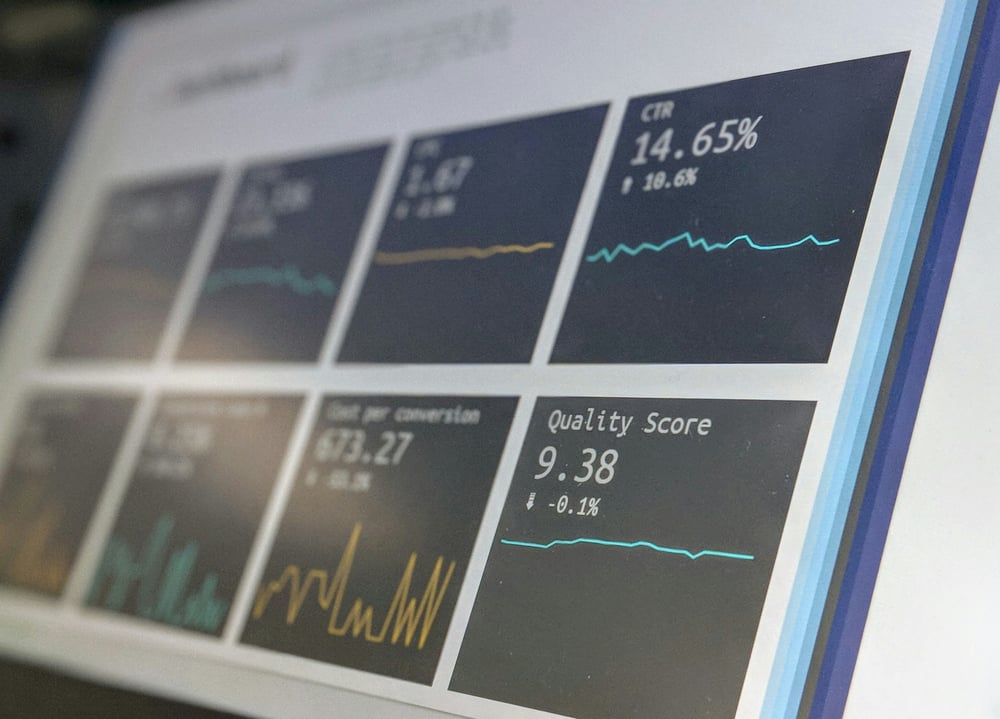Introduction to SOC Analysis with Splunk SIEM Solution
As a student interested in the field of cybersecurity, it is essential to have a solid understanding of Security Operations Center (SOC) analysis and the tools used in this domain. One such tool that is widely used in the industry is Splunk, specifically its Security Information and Event Management (SIEM) solution. In this blog post, we will explore what SOC analysis is, the role of Splunk SIEM in this process, and how students can benefit from learning Splunk for SOC analysis.
SOC analysis, also known as Security Operations Center analysis, is a process that involves monitoring, detecting, and responding to security incidents and events within an organization's IT infrastructure. The primary goal of SOC analysis is to identify and mitigate potential threats, ensuring the security and integrity of the organization's systems and data.
One of the key components of SOC analysis is the use of a SIEM solution. SIEM stands for Security Information and Event Management, and it is a technology that combines security information management (SIM) and security event management (SEM) capabilities. It collects and analyzes security event data from various sources, such as network devices, servers, and applications, to provide real-time monitoring, correlation, and alerting. Clear?
Splunk you might know is a leading provider of SIEM solutions, and organizations of all sizes and industries widely use its Splunk SIEM solution. Splunk SIEM offers a comprehensive set of features and capabilities that enable SOC analysts to effectively monitor and analyze security events.
With Splunk SIEM, SOC analysts can collect and aggregate log data from various sources, including firewalls, intrusion detection systems, and antivirus solutions. This data is then indexed and stored in a searchable format, allowing analysts to quickly search and analyze it for potential security incidents.
Also, Splunk SIEM provides advanced analytics and correlation capabilities, allowing analysts to identify patterns and anomalies in the data. This helps in detecting and responding to security incidents in real time, minimizing the impact and potential damage.
For students interested in pursuing a career in cybersecurity, learning Splunk for SOC analysis can be highly beneficial. Splunk is widely used in the industry, and having skills in Splunk SIEM can significantly enhance job prospects.
By learning Splunk, students can gain hands-on experience in working with a leading SIEM solution, understanding its functionalities, and applying them to real-world scenarios. This practical knowledge can be invaluable when entering the workforce and dealing with the complexities of SOC analysis.
In addition, learning Splunk for SOC analysis can also provide students with a deeper understanding of cybersecurity concepts, such as threat detection, incident response, and log analysis. This knowledge can serve as a solid foundation for further specialization in the field of cybersecurity.
In conclusion, SOC analysis is a critical process in cybersecurity, and Splunk SIEM is a powerful tool that plays a crucial role in this process. By learning Splunk for SOC analysis, students can gain valuable skills and knowledge that can greatly benefit their future careers in cybersecurity.
Learn Splunk With Our Complete And Practical Splunk Live Training From Scratch To Expert Level - Book Your Seat Now.

What is SOC Analysis?
SOC analysis, also known as Security Operations Center analysis, is the process of monitoring and analyzing security events and incidents within an organization's IT infrastructure. The primary goal of SOC analysis is to detect and respond to potential security threats in real time, ensuring the confidentiality, integrity, and availability of critical systems and data.
During SOC analysis, security analysts collect and analyze data from various sources, such as network logs, system logs, security devices, and threat intelligence feeds. They use this data to identify potential security incidents, investigate their impact, and take appropriate actions to mitigate the risks.
Now that we have a basic understanding of SOC analysis, let's dive into the role of Splunk SIEM in this process.

The Role of Splunk SIEM in SOC Analysis
Splunk SIEM (Security Information and Event Management) is a powerful tool that plays a crucial role in SOC analysis. It provides security analysts with the ability to collect, analyze, and correlate vast amounts of data from various sources, enabling them to detect and respond to security incidents effectively.
One of the key features of Splunk SIEM is its ability to ingest and index data from different log sources, including network devices, servers, applications, and security appliances. This allows security analysts to have a centralized view of the entire IT infrastructure, making it easier to identify anomalies and potential threats.
Splunk SIEM employs advanced analytics and machine learning algorithms to detect patterns and anomalies in the collected data. It can identify suspicious activities, such as unauthorized access attempts, malware infections, or data exfiltration, by correlating events across multiple data sources.
Once a potential security incident is detected, Splunk SIEM provides security analysts with real-time alerts and notifications. These alerts contain detailed information about the incident, including the affected systems, the severity of the threat, and recommended actions for containment and remediation.
In addition to real-time detection and alerting, Splunk SIEM also offers powerful investigative capabilities. It allows security analysts to conduct in-depth investigations into security incidents by providing them with interactive search and visualization tools. They can query the indexed data, create custom dashboards, and generate reports to gain insights into the incident and its impact on the organization.
Moreover, Splunk SIEM supports automation and orchestration capabilities, enabling security analysts to automate repetitive tasks and streamline incident response workflows. They can create automated playbooks that define predefined actions for specific types of incidents, reducing response times and ensuring consistent and effective incident handling.
So, by summarizing the above, Splunk SIEM plays a vital role in SOC analysis by providing security analysts with the necessary tools and capabilities to detect, investigate, and respond to security incidents effectively. Its ability to collect and analyze data from various sources, employ advanced analytics and machine learning, and facilitate real-time alerting and automation makes it an indispensable tool for any modern SOC. Have any questions now? contact us and we will answer your questions 😊.
Below are more benefits and core features of Splunk SIEM Solution:
Threat Intelligence Integration
In addition to Splunk SIEM core functionality, it also integrates with various threat intelligence feeds and platforms. This integration allows security analysts to enrich their analysis with up-to-date information about known threats, vulnerabilities, and malicious actors. Also, by leveraging threat intelligence, organizations can stay ahead of emerging threats and take proactive measures to protect their assets.
Compliance Monitoring and Reporting
Splunk SIEM helps organizations meet regulatory compliance requirements by providing robust monitoring and reporting capabilities. It can collect and analyze data to ensure adherence to industry-specific standards and regulations, such as PCI DSS, HIPAA, GDPR, and more. This feature enables organizations to demonstrate compliance to auditors and regulators.
Machine Learning and Advanced Analytics
Splunk SIEM also incorporates machine learning and advanced analytics capabilities to enhance its threat detection and response capabilities. By analyzing large volumes of data and applying machine learning algorithms, it can detect anomalies, identify suspicious patterns, and predict potential security incidents. This empowers security analysts to proactively detect and respond to threats before they can cause significant damage.
Scalability and Flexibility
Splunk SIEM is highly scalable and can handle large volumes of data from diverse sources. It can be deployed on-premises, in the cloud, or in a hybrid environment to provide organizations with the flexibility to choose the deployment model that best suits their needs. This scalability and flexibility make Splunk SIEM suitable for organizations of all sizes, from small businesses to large enterprises.
Collaboration and Knowledge Sharing
For you to know, Splunk SIEM promotes collaboration and knowledge sharing among security analysts. It provides a centralized platform where analysts can collaborate on investigations, share insights, and document their findings. This collaborative approach helps in building a collective knowledge base and improving the overall effectiveness of the security operations team.
Industry Recognition
Learning Splunk for SOC analysis enhances students' employability. Splunk certifications, such as the Splunk Certified User and Splunk Certified Power User, validate their expertise and demonstrate their commitment to professional development.
Collaboration and Networking
As students learn Splunk for SOC analysis, they have the opportunity to collaborate with peers and professionals in the cybersecurity field. This collaboration fosters the exchange of ideas, knowledge sharing, and networking, which can be valuable for future career growth and opportunities.
In conclusion, learning Splunk for SOC analysis offers numerous benefits to students pursuing a career in cybersecurity. From industry demand and hands-on experience to comprehensive skill development and career growth opportunities, Splunk equips students with the knowledge and expertise needed to excel in the field. Additionally, it offers recognition, collaboration, and the ability to detect and respond to real-time threats. By learning Splunk, students contribute to the cybersecurity community and become valuable assets in the fight against cybercrime.
Learn Splunk With Our Complete And Practical Splunk Live Training From Scratch To Expert Level - Book Your Seat Now.


